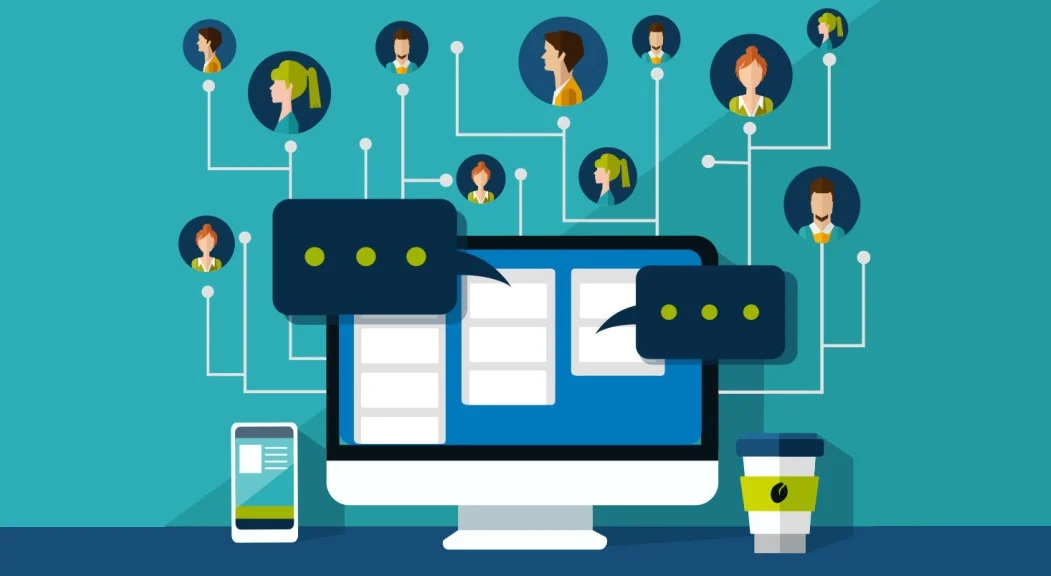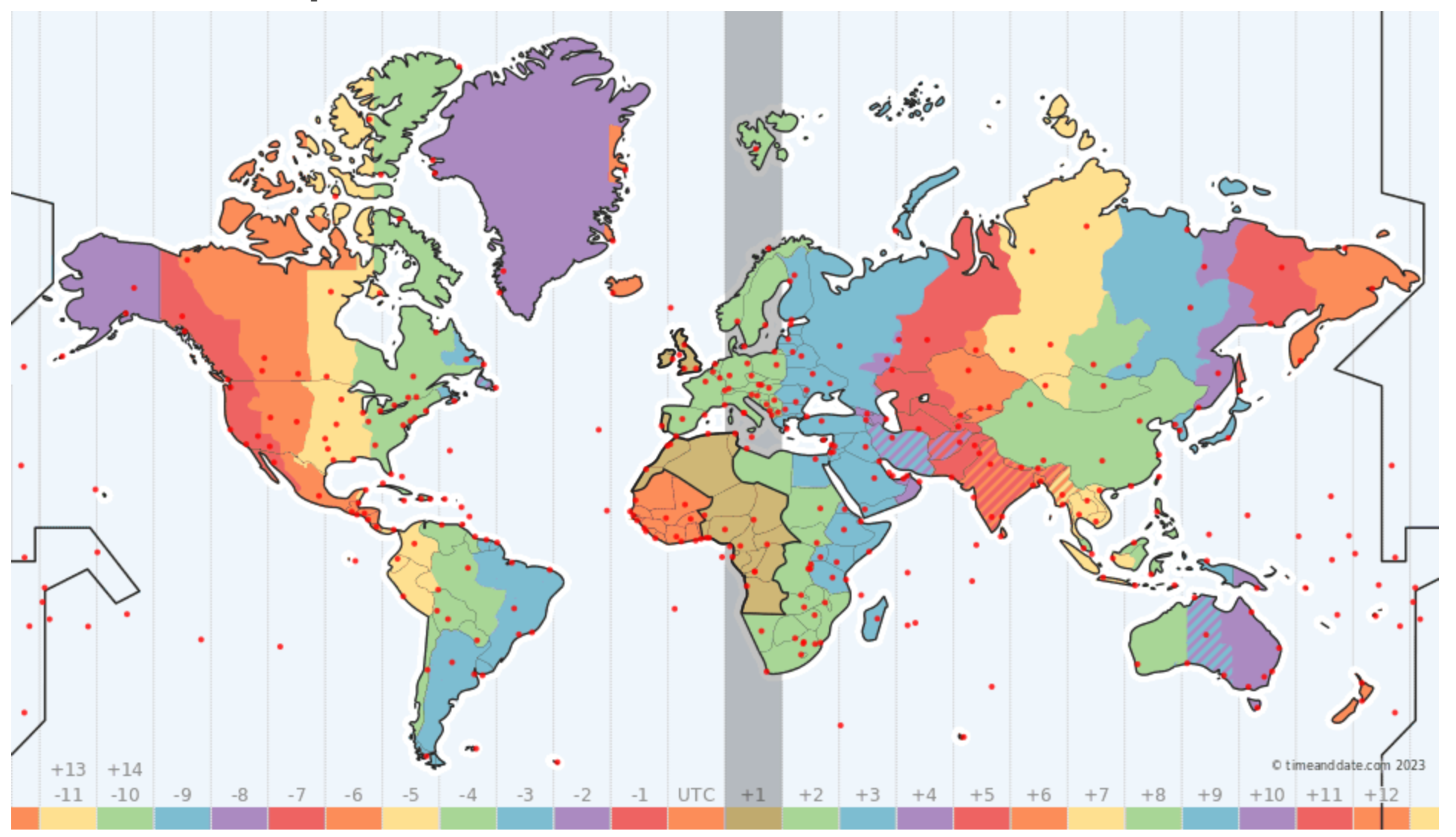12 min to read
As a remote digital agency with a partially remote team, keeping everyone on the same page, integrated, and motivated is a huge problem. We focus a lot on keeping everyone motivated and aware of the company's directions.
Effective communication is the lifeblood of any successful organization. It forms the foundation for collaboration, productivity, and overall organizational success. It is also pivotal in ensuring a company's clarity, transparency, and alignment, whether conveying critical information, sharing ideas, resolving conflicts, or building relationships. This article will explore the key elements contributing to effective communication in any company and discuss strategies for fostering a communication-rich environment.
CodeDesign is the leading digital marketing agency in Lisbon Portugal.

Clear and Concise Messaging
Clear and concise messaging is essential for effective communication in any company. Messages should be structured in a manner that is easy to understand and devoid of unnecessary jargon. Considering their knowledge and background, conveying information that resonates with the intended audience is crucial. This can be achieved through simple language, coherent organization of thoughts, and using visual aids when appropriate. Even the most technical messages should be rendered in a manner that everyone will understand. Professional data literacy consultants can help craft the messaging appropriately and clearly in this case. Similarly, messages should be tailored to the recipient's needs, interests, and preferences. This means that the audience should be taken into consideration when crafting the message,
and it should also be tailored to their particular level of understanding.
The Clarity in Expectations and Goals
Effective communication requires clarity in setting expectations and goals. Employees must clearly understand their roles, responsibilities, and performance expectations. Managers should provide clear, concise instructions, outline project objectives, and establish measurable goals. Regular check-ins and feedback sessions help ensure that employees are on track and clearly understand what is expected, fostering accountability and productivity.
Active Listening
Communication is a two-way process, and active listening is a fundamental component of effective communication. Encouraging employees to listen to their colleagues, superiors, and subordinates actively fosters a culture of respect, empathy, and understanding. Active listening involves giving undivided attention, maintaining eye contact, asking clarifying questions, and paraphrasing to ensure accurate comprehension. Employees who feel heard are more likely to be engaged and contribute meaningfully to the company's goals.
Open and Transparent Communication
Open and transparent communication builds trust and promotes a healthy work environment. Employees should feel comfortable expressing their opinions, sharing feedback, and raising concerns without fear of reprisal. Management should encourage an open-door policy and establish channels for anonymous feedback to ensure that everyone has a voice. Regularly sharing information about the company's goals, strategies, and performance fosters a sense of ownership and alignment among employees. Read this complete guide on digital marketing funnel and then choose the right digital marketing channel for your business.
Leadership Communication
Leaders play a pivotal role in setting the tone for effective communication within a company. They should lead by example, demonstrating excellent communication skills, active listening, and empathy. Regular and transparent communication from leaders helps align employees with the company's vision, mission, and values. Town hall meetings, newsletters, and one-on-one interactions effectively allow leaders to communicate with their teams and create a sense of purpose and direction.
Constructive Feedback and Recognition
Providing constructive feedback is crucial for professional growth and development. Managers should offer actionable input and focus on improvement rather than personal criticism. Regular performance evaluations and coaching sessions help employees understand their strengths, identify areas for improvement, and set goals. Simultaneously, recognizing and appreciating employees' achievements, both publicly and privately, reinforces positive behavior, boosts morale, and motivates the workforce.
Encouraging Collaboration and Teamwork
Proper communication thrives in a collaborative and teamwork-oriented environment. Companies should encourage cross-functional collaboration, teamwork, and knowledge sharing. Facilitating open communication channels between departments and teams can break down silos and foster innovation. Collaboration tools and platforms can support seamless information sharing, brainstorming sessions, and collective decision-making, ensuring communication flows effortlessly across the organization. Check these Amazon FBA tips to grow your business and see how optimising your Amazon listing could help you grow.

Conflict Resolution and Mediation
Conflicts are inevitable in any workplace, and effective communication plays a vital role in resolving them. Companies should promote a culture of constructive conflict resolution and provide employees with the necessary tools and training to address conflicts professionally and respectfully. Encouraging open dialogue, active listening, and mediation techniques can help resolve disputes amicably, preserving relationships and maintaining a harmonious work environment.
Utilizing Multiple Communication Channels
Companies must embrace various communication channels to cater to diverse employee preferences and ensure information reaches everyone effectively. While face-to-face interactions are invaluable, virtual communication tools like email, instant messaging, and video conferencing enable real-time collaboration, especially in geographically dispersed teams. Project management and collaboration platforms can also centralize communication, facilitate document sharing, and streamline workflows.

Embracing Digital Communication Tools
In the digital age, effective communication often involves utilizing various digital tools and platforms. Companies should embrace technology that enhances communication efficiency and collaboration. This may include project management software, team messaging apps, video conferencing platforms, and document-sharing tools. By leveraging these tools, employees can communicate seamlessly, regardless of physical location, facilitating remote work and efficient information exchange.
Non-Verbal Communication
Effectual communication is not limited to spoken or written words; non-verbal cues also play a vital role. Facial expressions, body language, tone of voice, and gestures can significantly impact how messages are received. Managers and leaders should be aware of their non-verbal communication and ensure it aligns with their intended message. Similarly, employees should be mindful of their non-verbal cues and seek to understand those of their colleagues to enhance comprehension and avoid miscommunication. Read this guide on E-commerce supply chain and voice search optimization.
Continuous Improvement and Learning
To foster effective communication, companies should prioritize continuous improvement and learning. This includes providing communication skills training, workshops, and resources to employees at all levels. Employees can enhance their communication skills by investing in ongoing development by delivering presentations, engaging in negotiations, or collaborating in cross-functional teams. Encouraging a growth mindset and providing learning opportunities cultivate a culture of continuous improvement and adaptability.

Effective communication is the backbone of any successful company. Companies can foster a communication-rich environment by embracing clear and concise messaging, active listening, open and transparent communication, and utilizing multiple channels. Furthermore, incorporating cultural sensitivity, inclusivity, timeliness, and responsiveness and embracing digital tools can enhance communication effectiveness. The clarity in expectations, conflict resolution, continuous improvement, leadership communication, and encouraging collaboration all contribute to establishing effective communication practices within organizations. By prioritizing effective communication, companies can build stronger relationships, enhance productivity, and achieve their goals more efficiently.
How do we manage our remote teams?

At Codedesign, maintaining motivation within a remote digital marketing team is a unique challenge, but it's entirely possible with the right strategies. Here are some tips:
- Communication is Key: Regular check-ins and meetings can help team members feel connected and aligned. Use video conferencing tools like Zoom or Google Meet for face-to-face interaction. Use chat platforms like Slack or Microsoft Teams for instant communication and collaboration.
- Set Clear Goals: Clearly defined goals provide direction and purpose. They also allow team members to track their progress and feel accomplished when goals are achieved.
- Promote Work-Life Balance: Encourage your team to take regular breaks and disconnect from work at the end of the day. This can help prevent burnout and keep them refreshed and motivated.
-Provide the Right Tools: Ensure your team has the necessary technology and tools to perform their tasks efficiently. This can include project management tools like Teams, digital marketing tools like Google Analytics or SEMrush, and collaboration tools like Google Workspace.
- Foster a Culture of Recognition: Regularly acknowledging and celebrating successes, big and small, can boost morale. A simple thank you, or a shout-out in a team meeting can make a significant difference.
- Offer Opportunities for Professional Development: Encourage your team members to expand their skills and knowledge. This could include online courses, webinars, or workshops relevant to their role.
- Encourage Collaboration and Creativity: Give your team the space to brainstorm, share ideas, and work together on projects. This improves the quality of work and helps team members feel more engaged and motivated.
- Provide Flexible Work Hours: One of the perks of remote work is flexibility. Allowing your team to work during their most productive hours can enhance productivity and job satisfaction.
- Host Virtual Team Building Activities: This could be a virtual coffee break, game night, or movie night. These activities can foster community and camaraderie, significantly boosting motivation.

- Encourage Physical Activity and Wellness: Promote healthy habits like regular exercise, proper nutrition, and mindfulness. You could organize virtual yoga sessions, mindfulness workshops, or a health challenge.
These strategies motivate your digital marketing team and promote productivity, engagement, and overall job satisfaction. Remember, every team is unique, so it's important to regularly solicit feedback and be willing to adapt these strategies to suit your team's needs and preferences.
The timezone challenge
If managing a local remote team is a pain, imagine our team that serves clients in 8 different time zones. Here are a few tips to help in this situation:

Working across multiple time zones can introduce unique challenges for remote digital marketing teams. However, you can keep your team motivated and productive with careful management and effective strategies. Here are some tips:
- Clear Expectations: Set clear expectations about work hours, availability, and response times. Understand different time zones' constraints and adjust your expectations accordingly.
- Asynchronous Communication: While real-time interaction is great, it may not always be possible with team members in different time zones. Encourage the use of asynchronous communication tools like email or project management tools where updates and tasks can be posted and responded to when it's convenient for the individual.
-Flexible Schedules: Allow flexibility in work hours to accommodate personal schedules and peak productivity times. This can enhance work-life balance, a key motivator for remote workers.
- Shared Calendar: Use a shared calendar to keep track of each team member's work hours, important deadlines, and scheduled meetings. This can help prevent scheduling conflicts and ensure everyone is in the loop.
-Rotate Meeting Times: When live meetings are necessary, rotate them to ensure fairness. If some team members need to join a meeting outside of their typical work hours one time, the burden should be shared, and other team members should join outside of their work hours the next time.
- Cultural Sensitivity: Be aware of each team member's locale's different holidays, customs, and norms. Recognize and respect these differences to create an inclusive environment.
- Use Collaboration Tools: Leverage cloud-based collaboration tools that allow for real-time updates, so team members can pick up where others left off, regardless of when they log in.
- Recognize Efforts: It's imperative in a remote, dispersed team to recognize individuals' efforts and successes. It can be done during team meetings or via communication tools, where everyone can appreciate their colleagues' achievements.
- Promote Team Building: Foster connection through virtual team-building activities that can be done asynchronously, such as online games, photo challenges, or virtual tours.
- Encourage Self-Care: Promote healthy work habits to avoid burnout, including taking regular breaks, setting boundaries between work and personal time, and practicing mindfulness or other stress management techniques.
While managing a remote team across different time zones can be challenging, it also presents an opportunity to harness diverse perspectives and build a truly global team. You can keep your team motivated and engaged by fostering a flexible, inclusive, and understanding culture.

Can AI help with this huge challenge?
AI can be a powerful tool to aid in motivating a remote digital marketing team. Here's how:
- Personalized Learning and Development: AI can help customize training materials based on individual preferences and needs. This personalization can improve engagement and motivation as team members are able to grow their skills in areas they are interested in.
- Task Automation: AI can handle repetitive tasks such as data entry, scheduling, or reporting. This allows team members to focus on more strategic, creative tasks, which can lead to increased job satisfaction and motivation.
- AI-Powered Project Management: AI can predict potential project delays, identify risks, and suggest corrective actions, helping teams meet their goals more effectively.
- Performance Analysis: AI can analyze data to provide insights into individual performance. This information can be used to tailor feedback, recognize successes, and address areas of improvement, all of which can boost motivation.
- Effective Communication: AI chatbots can facilitate communication, ensuring everyone is updated and aligned. Chatbots can also be programmed to send motivational messages, reminders about breaks, or even fun, team-building activities.
- Workload Balancing: AI can help balance workloads more effectively by tracking tasks and availability. Balanced workloads can prevent burnout and improve motivation.
- Mental Health Support: AI-powered tools can provide support and resources for mental health. For example, AI chatbots can teach mindfulness exercises, provide stress management tips, or even help team members identify when to take a break.
- Enhanced Collaboration: AI can help streamline collaboration by suggesting the best times for meetings based on different time zones, predicting and suggesting the most efficient ways to complete tasks, and more.
- Increased Transparency: AI can provide detailed analytics on project progression and individual performances, promoting a culture of transparency. This can boost trust and motivation among team members.
In essence, AI can take over repetitive tasks, provide personalized support, and offer valuable insights, all of which can greatly enhance the remote working experience. Businesses can use AI strategically to keep their remote teams motivated, efficient, and satisfied.
FAQS - Frequently Asked Questions
What constitutes effective communication within a company?
Effective communication within a company involves clear, concise, and consistent exchanges between all levels of the organization, including management and employees. It encompasses not only the verbal and written dissemination of information but also the active and empathetic listening to feedback, concerns, and ideas. Effective communication is characterized by transparency, respect, and mutual understanding, aiming to foster a collaborative and inclusive work environment. It plays a crucial role in aligning team goals, enhancing employee engagement, and facilitating decision-making processes.
How does clear and concise messaging impact company communication?
Clear and concise messaging significantly enhances company communication by ensuring that information is easily understood and retained by all recipients. It reduces the likelihood of misunderstandings and errors, streamlines processes, and saves time, allowing employees to focus more on their tasks and less on deciphering complex messages. Moreover, clear messaging fosters trust and transparency within the organization, as employees feel more informed and involved in the company's operations and decision-making processes.
Why is clarity in expectations and goals important?
Clarity in expectations and goals is essential because it sets a definitive direction for the company and its employees. When expectations and goals are clearly communicated, it eliminates ambiguity, enabling employees to focus their efforts on achieving specific objectives. This clarity motivates employees, enhances productivity, and contributes to a more efficient and effective work environment. Furthermore, it allows for better measurement of progress and performance, facilitating appropriate adjustments and recognitions.
What is the role of active listening in effective communication?
Active listening plays a pivotal role in effective communication by ensuring that all parties feel heard and understood. It involves fully concentrating on, understanding, responding to, and remembering what is being said. This form of listening builds trust, reduces misunderstandings, and promotes a deeper and more meaningful exchange of information. It encourages openness, fosters mutual respect, and enhances team cohesion by demonstrating that each member's opinions and insights are valued.
How can open and transparent communication be achieved and maintained?
Open and transparent communication can be achieved and maintained by fostering a culture of honesty and trust, where employees feel safe to express their thoughts, feedback, and concerns without fear of retribution. Leaders should lead by example, sharing information freely and encouraging dialogue. Regular meetings, updates, and feedback sessions can help maintain this openness. Additionally, establishing clear channels for communication and ensuring that messages are consistent and accessible to all employees are key practices for sustaining transparency.
What practices can leaders adopt to improve communication?
Leaders can improve communication by being approachable and actively engaging in conversations with team members. Regularly scheduled meetings, updates, and feedback sessions encourage open dialogue. Leaders should practice active listening, show empathy, and provide clear and constructive feedback. They can also foster an environment that values diverse opinions and encourages team members to share their ideas. Investing in communication training for themselves and their teams can further enhance communication skills across the organization.
Why is providing constructive feedback and recognition important?
Providing constructive feedback and recognition is crucial because it helps individuals understand their strengths and areas for improvement, driving personal and professional growth. Constructive feedback, when delivered respectfully and effectively, can motivate employees, improve performance, and encourage a culture of continuous learning. Recognition of achievements, on the other hand, boosts morale, increases employee engagement, and fosters a positive work environment. Together, these practices enhance communication by making it more meaningful and impactful.
How does encouraging collaboration and teamwork benefit communication?
Encouraging collaboration and teamwork benefits communication by breaking down silos and promoting a culture of shared goals and mutual support. When team members collaborate, they exchange ideas, perspectives, and knowledge more freely, leading to innovative solutions and stronger relationships. This open exchange enhances understanding and trust among team members, improving overall communication efficiency and effectiveness within the team and across the organization.
What strategies can be employed for conflict resolution and mediation?
For conflict resolution and mediation, strategies such as active listening, empathetic engagement, and focusing on interests rather than positions can be effective. It's important to create a safe and neutral environment for open dialogue. Encouraging the involved parties to express their feelings and perspectives without judgment helps in understanding the root cause of the conflict. Seeking common ground, exploring mutually beneficial solutions, and agreeing on clear action steps can lead to a constructive resolution. Training in conflict resolution techniques can also equip team members with the skills needed to navigate disagreements constructively.
Why is embracing digital communication tools essential for modern companies?
Embracing digital communication tools is essential for modern companies because these tools facilitate real-time, efficient, and flexible communication, critical in today's fast-paced business environment. They support remote work, enable collaboration across geographical boundaries, and streamline information sharing. Digital tools like instant messaging, video conferencing, and collaborative platforms encourage continuous engagement and ensure that team members remain connected, regardless of their physical location. Additionally, these tools can be customized to meet the specific needs of the company, enhancing overall communication and operational efficiency.



Add comment ×